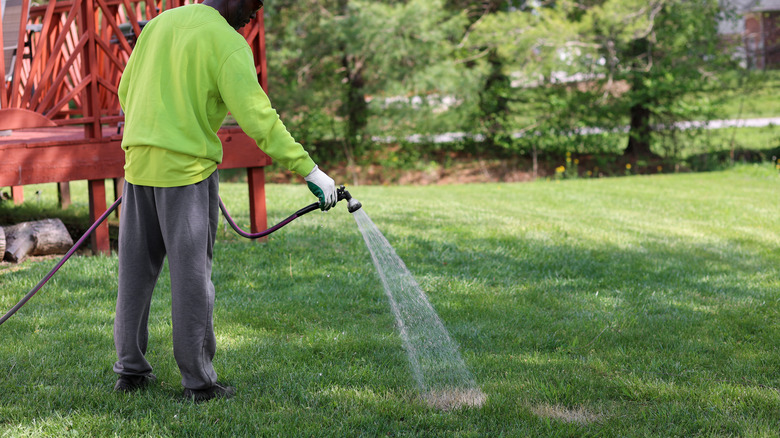Ah, the intoxicating allure of a lush, verdant lawn! A vast emerald blanket that rewards your tender, loving care with vibrancy while also effectively smothering those intrusive weeds. However, tragedy lurks in over-enthusiasm, as it’s possible to fertilize your lawn too much. The double-edged sword of lawn fertilization reveals itself once it transforms your lush field into a sad spectacle of brown turf or bare patches. Fortunately, a speedy remedy lies in generously watering the affected sections, diluting excess fertilizer before your grass absorbs its salt-ridden death sentence. However, in over-fertilization’s cruel aftermath, more cost and time investment may await in the form of overseeding or other more involving interventions.
Dealing with evident repercussions takes knowing what they look like. Picture your turf sporting unwanted accessories like brown or yellow tips— evidence of a dreadful phenomenon known as fertilizer burn. Or envision an unwelcome layer of crusted fertilizer adamant to descend into the soil. Worst-case scenario? You may find yourself without any greener pastures to speak of as your grass growth stalls or unsightly bare patches begin to appear. But while these signs of an overfertilized lawn might paint a grim picture, remember that excess lawn fertilizer isn’t necessarily a death warrant for your lovely turf. Take swift, informed action and witness your seemingly dead lawn come to life.
How to reverse over-fertilization in your lawn

Saving an overfertilized lawn starts with extracting as many visible fertilizer granules as possible. Use your rake or broom to push the granules into accessible, quickly scooped piles. Once manual retrieval is complete, water the affected section of your lawn heartily using a garden hose to dilute the fertilizer’s concentration. A sprinkler system will suffice for larger areas. Plus, you might have to repeat this refreshing cleanse over a few days. But it’s a delicate balance, so avoid crossing the line into the waterlogging territory. As the drama unfolds, resist the temptation to mow— your grass needs those blades for photosynthesis and continued growth. Trying to speed up the cleanup? Activated charcoal might help.
But what if the damage is irreparable? Overseeding comes in here. The game plan will involve diluting the fertilizer, applying new soil, and then raking. Afterward, scatter your grass seeds and water daily. Nestled in the heart of reseeding is aeration. Consider it a reliable courier; only in this case, it ensures water, air, and nutrients get delivered straight to the roots.
On your journey through lawn nurturing, make one practice a constant companion: soil testing. It’s a matter of checking your soil’s nutrient levels before applying fertilizer — imagine taking a patient’s vitals before prescribing medication. Take it a notch higher by getting acquainted with slow-release fertilizers for grass and keeping your lawn fertilization frequency in check.